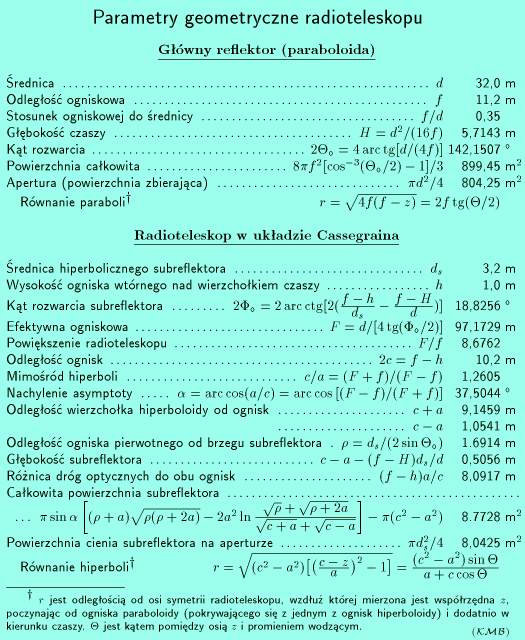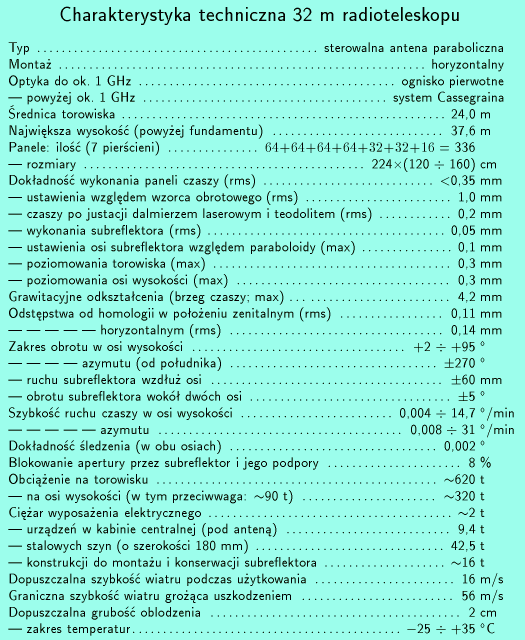Specifications
Centre for Astronomy, NCU, Toruń
Specyfikacje
32-m radioteleskopu
Centrum Astronomii UMK, Toruń
English/po angielsku Polish/po polsku
|
A description with number of pictures of the telescope is presented on
the official site. See also
voluminous
Observer's
Handbook and detailed documents: • theoretical analyses of this antenna directional patterns (with abstract in English), • geometry of dish panels (in Polish, but there is related cross check in English), • analysis and model for RT32 pointing (in English) with further discussion (in Polish and English), and • derivation of one of the furmulae given below in the table describing geometrical parameters (in Polish with English summary). Antenna coordinates were determined with cm accuracy using the VLBI technique. These rectangular coordinates (which refer to the cross point of the elevation and azimuth axes) can be transformed into usual geographical coordinates:
Converting these new coordinates (r = 3838270.192 m, R = 6364638.289 m) for the GRS80 ellipsoid (a = 6378137 m, 1/f = 298.257222101) gives: the same coordinates in angular units as the earlier measurements (to the last digit shown) and h = 133.628 m. Note that the height for
these geodetic coordinates referred to the geoid (as used by the GPS system) is smaller than that referred to the ellipsoid by about 29.70 m (see e.g. here). |
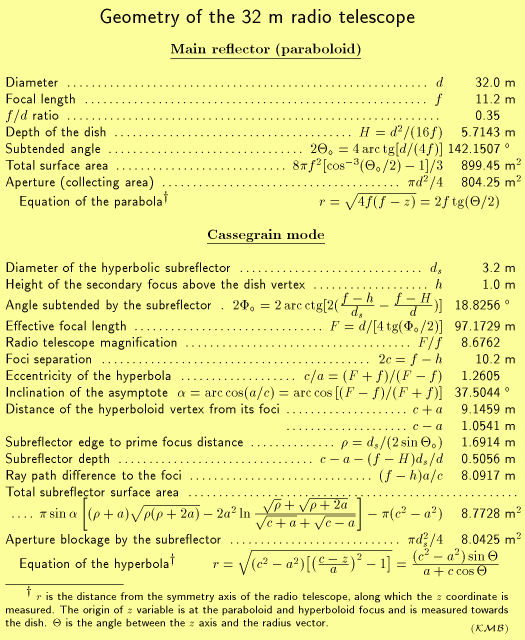
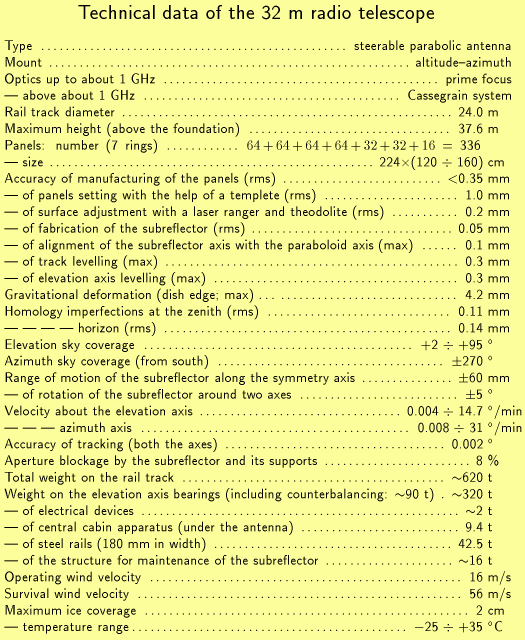
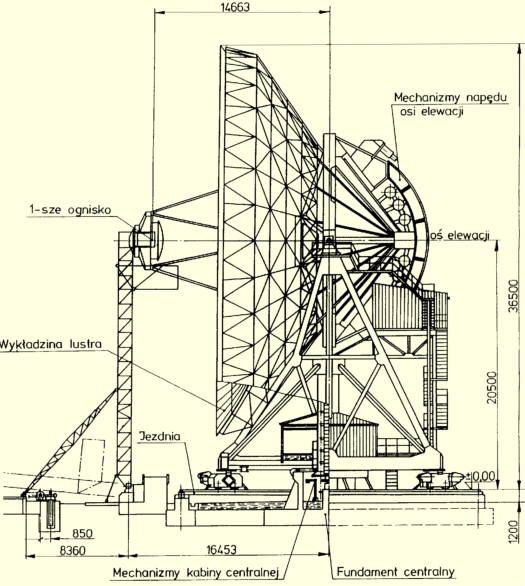
Schemat konstrukcyjny radioteleskopu – widok w pozycji serwisowej
Design of the radio telescope shown in the state of subreflector
maintenance
(drawing by Z. Bujakowski, the principal designer)
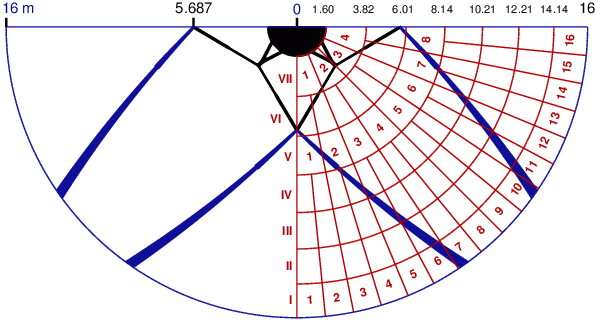
Rozkład i numeracja paneli oraz cienie w rzucie na płaszczyznę apertury
Panels and shadows as projected on the aperture plane
Wersja polska/Polish
Wersja angielska/English
Pełny opis 32-metrowego teleskopu wraz z jego zdjęciami można znaleźć na
oficjalnej stronie
oraz w artykule
napisanym jeszcze w fazie projekowania instrumentu i w
Podręczniku obsertwatora. Dostępna
jest też szczegółowa prezentacja 'pozycjonowania'
(po angielsku) oraz dyskusja pewnych z tym
związanych problemów (zasadniczo po polsku), teoretycznych
charakterystyk kierunkowych,
opis geometrii paneli
oraz wyprowadzenie jednego ze
wzorów podanych w poniższej tabelce grupującej parametry geometryczne.
Współrzędne anteny zostały
wyznaczone z centymetrową
dokładnością za pomocą obserwacji techniką VLBI wykonanych w 2000 r.
Otrzymane stąd współrzędne prostokątne
(odnoszące się do punktu przecięcia osi wysokości i osi azymutu) można
przeliczyć na współrzędne geograficzne:
Po przeliczeniu r = 3838270,192 m, R = 6364638,289 m dla elipsoidy GRS80 (a = 6378137 m, 1/f = 298,257222101) te nowe współrzędne dają: takie same wartości współrzędnych w mierze kątowej jak wcześniejsze pomiary (w podanym zaokrągleniu) i h = 133,628 m. Dla tych współrzędnych
geodezyjnych ta wysokość względem elipsoidy jest większa od wysokości względem geoidy (używanej w systemie GPS) o ok. 29,70 m (patrz np. tutaj).
|
